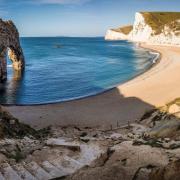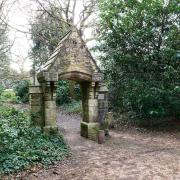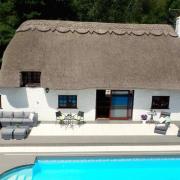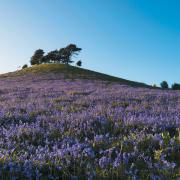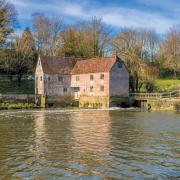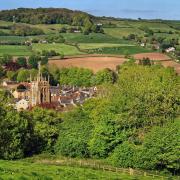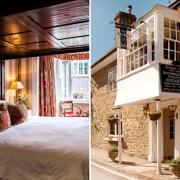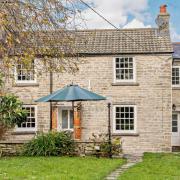Shaftesbury...past
Earl Grosvenor (later Marquess of Westminster) bought Shaftesbury in 1820. In September 1918, his great great grandson, Lord Stalbridge sold virtually the whole of Shaftesbury for £75,000 to three London businessmen. Four days later they turned a quick profit and sold it for £80,000 to a local syndicate consisting of the town doctor, Dr Harris, the landlord of the Grosvenor Arms Hotel and former mayor Robert Borley, and Herbert Viney, manager of the town’s largest wholesale and retail grocer. Once the three men had decided which properties they wished to retain, they put the rest up for sale. The townsfolk formed a tenants’ association and agreed to only bid for the property they occupied when it came up for auction. The end of May 1919 was a watershed week in the town’s history. By the time the hammer fell on the final lot, there were 300 sold over three days, the Corporation had acquired the fire station, market hall, cattle market, cricket ground and Coppice Street allotments. The Park was given to the town, and Castle Hill became a permanent open space for recreation.
The Grosvenors had been good landlords, taking an interest in town affairs from their local country seat, Motcombe Park (now Port Regis School). They had paid for many of the local amenities including the Town Hall and the building and running costs of the Westminster Cottage Hospital on Park Walk.
But Shaftesbury, whose historic abbey had made it one of the richest medieval towns in England, was left off the railway map, possibly due to its famously hilly terrain. Its nearest station was three miles away in Semley.
Such disadvantages spared it the red brick terraced streets of its neighbour, Gillingham which had a busy railway station. Shaftesbury’s houses were of stone, principally greensand, and remained concentrated round a handful of streets, Bell and Salisbury streets, Bimport, the High Street, then steeply down Gold Hill’s famous cobbles to the thatched cottages of St James.
Until 1894 the borough comprised three parishes, once containing a dozen churches, including Primitive Methodist, Wesleyan and Congregationalist chapels and a Temperance Hall. The Temperance Movement was particularly strong in Shaftesbury, though the town’s 14 public houses must have made their task harder.

Shaftesbury...present
Gold Hill: This steep cobbled street, made famous by Ridley Scott’s 1970s TV ad for Hovis bread, offers one of the finest views in Dorset, and also the excellent Gold Hill Museum. goldhillmuseum.org.uk
Abbey Ruins: Alfred the Great founded this first great abbey for women in AD 888, its community and the town flourished until its dissolution in 1539. Walk its ruins and herb garden. shaftesburyabbey.org.uk
Fringe Fest: Music, comedy, dance, theatre and poetry at venues ranging from historic churches to cheesemonger’s van, this late July event is used as a warm-up festival for Edinburgh Fringe performers. shaftesburyfringe.co.uk





